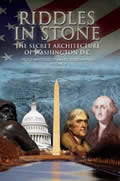By
Timothy N. Baldwin, JD.
April 5, 2014
NewsWithViews.com
I have shown before (here, here, here, and here) how a so-called “runaway” Article V convention is, in fact, a secession act of the States that propose and/or ratify a new constitution. Despite the hollow echoes of those who oppose Article V for fear of such a runaway/secession movement, they ignore the reality that, first, no State is going to try to secede from the union and second, no sufficient number of States would propose and ratify a new constitution to secede from the Constitution of the United States. The evidence shows, the only amendments that are popular enough to be proposed and ratified by the States are ones that limit the federal government, not empower it.
There is a formula that proves a runaway/secession movement is impossible. The formula is based on these firm premises:
1. The only States that would even consider proposing a new constitution would be the pure, blue States. They are, theoretically, the only States that would want to rid themselves of the federal republican form of government in the Constitution and create a another kind of government (though no plan has even been articulated by any State).
2. The blue States vary in size and are divided by a large, consolidated mass of red and purple States.
3. The blue States would not be able to runaway/secede from the red and purple States because they could not survive economically and militarily without them, unlike the red and purple States that are largely homogenous and similarly-situated.
4. The likelihood that the blue States would even consider running-away/seceding from the larger red and purple states is, practically speaking, impossible.
5. If the blue States that wished to secede were to survive as a new union, they would have to create a new constitution that required ratification from at least a majority of the States, which would necessarily include many red and purple States.
6. However, increasing the ratification percentage to include red and purple States works against a runaway/secession movement and exponentially decreases the likelihood of its success. In other words, that a number of red and purple States would runaway/secede from the Constitution to form a new constitution with the blue States is impossible.
7. Also, the red states would refuse to diminish their political power by separating from the other red states to join a new union comprised mostly of blue states. Their survival would require them to remain with the red states.
8. There is no scenario in which secession/runaway/new constitution would be either (a) beneficial for the runaway/seceding States or (b) ratified by the necessary number States to make the runaway/secession safe for the blue States.
Conclusion: the runaway/secession theory is unfounded, at best, and should not be used to oppose Article V. To do so forsakes the real for the imaginary.
So,what kind of amendments would probably be proposed in an Article V convention and which of those amendments would probably be rejected and/or ratified by the States.
We know that no State will propose or ratify ANY amendment that undermines the Bill of Rights. Why?—because each and every State protects substantially the same rights as the Bill of Rights in their State constitutions. In many States, they protect MORE individual rights than the U.S. Constitution.
If, presumably, the blue States intended to rid the people of these rights (as Article V opponents conjecture), these States would have amended their State constitutions to remove these Rights and subjected the people to absolute government control. Clearly, amending a State constitution is umpteen times easier than amending the U.S. Constitution. Yet, no blue State has ridded their people of those inalienable Rights. Likewise, the red States protect this universal standard of rights in their constitutions and with as much vigor.
Too, consider that some blue States are strong advocates of individual liberty and State autonomy—more so than some red or purple States. For example, Vermont, Delaware and Maine are included in the “Free State Project” list. To be on this list means that State must be conducive for individual liberty and federal decentralization. Thus, though they are blue States, they will never attempt to undermine the Bill of Rights.
The evidence emphatically proves that no State is going to propose to eliminate in the U.S. Constitution what they protect (and have for hundreds of years) in their State constitutions. Add to this,no purple or red State will allow the blue States to undermine the Bill of Rights.
Therefore, the Bill of Rights is safe, and this is no reason to oppose Article V on this ground.
Next,what amendments would have enough popular attraction that a blue State would propose in hopes that the red and purple states would ratify them? Using The New American’s reference of George Soros to oppose Article V, the only amendment that Soros and his kind are pushing is to reverse the Citizens United Supreme Court decision, which ruled that corporations have First Amendment protections of speech, meaning corporations can spend money on promoting political campaigns. (See, Link.)
So, is it probable that the purple and red states would ratify an amendment stating that corporations are not persons with First Amendment protection? The chances are very small.
Consider that before Citizens United only 22 of 50 (a far cry from 3/4 of the States) States prohibited corporate independent expenditures on political campaigns. Presumably, they would agree with Soros to overturn Citizens United. Of those 22 states, all but one (Montana) amended their laws to comply with the Citizens United decision. [Link]
This means that 28 States (over half of the States) permitted corporations to spend money on political campaigns regardless of the Citizens United decision. Obviously, those 28 States do not contest Citizens United, but support it. Therefore, Soros’ effort to overturn Citizens United through constitutional amendment is virtually impossible—all of his money notwithstanding.
Since there is not even a notable effort by liberals to amend the Constitution, all of the rhetoric about Soros and global elites are nothing more than conspiracy theories and should play no part in politics of reality.
What amendments are likely to be popular enough to pass 2/3 of the States to call a convention, the convention for proposing amendments, and 3/4 of the States for ratification?
As Rep. Bill Taylor (R-SC) rightly noted, the only amendments that aren’t a “blue or red movement, [but are] a red, white and blue movement” are the following. Rep. Taylor said,
• Require a balanced budget: We have $17 trillion in debt, and some, such as Nancy Pelosi, want to increase it even further. They always resort to emotional blackmail when fiscal conservatives want to slow spending, painting them as people taking food out of the mouths of babes. No more manipulation of the facts — let’s just be responsible with our federal finances.
• Term limits for elected officials: They will never get passed through the traditional legislative process. It’s like the fox guarding the hen house.
• Limiting power and jurisdiction of the federal government: The federal government was created to serve the states, not to sue them when the president in power doesn’t like voter-passed laws. This is the case with North Carolina right now, which is being sued by the Department of Justice over a voter identification law.
• Limiting taxation: Taxes will never get lowered because money is power, and your money is necessary for vote-buying in the form of appropriations for pet district projects and entitlements.
• Term limits for the Supreme Court: If you get a radical in the Supreme Court, it puts our Constitution at risk for manipulation and distortion. No judge should be in power for life.
He is right. Let’s look at how the States already handle these issues to gauge how they would handle them in an Article V convention.
• Balanced budget
Of the 50 States, 49 require a balanced budget from their legislators.
• Term limits for elected officials
Of the 50 states, 37 limit the terms of their legislators and/or governors, either in consecutive or lifetime periods. [Link]
• Limiting power and jurisdiction of the federal government
Of the 50 states, a large majority have passed legislation in some way nullifying or resisting federal power. For example, all but a handful of States passed or introduced the Firearms Freedom Act, a statute designed to exempt certain weapons from falling under federal authority. Colorado and Washington legalized marijuana, even though it is against federal law. Numerous States opposed the federal Real ID Act. The New American magazine admits that state legislators across America are promising to nullify federal gun laws.
Most of the States, perhaps 3/4, will ratify amendments that bolster Federalism in the United States. Why wouldn’t they? If they are already doing so individually, they will do so collectively and with more vigor, for as James Madison noted about the synergy of human nature, “The reason of man, like man himself, is timid and cautious when left alone, and acquires firmness and confidence in proportion to the number with which it is associated.” Federalist Paper 49.
• Limiting taxation
Of the 50 States, 49 limit the legislature’s ability to tax and spend, based on their balanced budget requirements.
• Term limits for the Supreme Court
Of the 50 states, most do not limit the term of their Supreme Courts. However, the general and growing sentiment among the States is that the United States Supreme Court has allowed Congress to regulate matters that the States hold was reserved to the States. Thus, it is likely that the States would consider ratifying limits on or structural changes of the federal judiciary.(See discussion of judicial term limits.)
|
The evidence is clear: the States govern themselves with more government responsibility and structural limitations than the federal government. How in the name of common sense, human nature, and political experience can one claim that the States will call a convention to propose amendments to give the federal government more power than the States deny themselves? And how can one reasonably claim that the States will apply for a convention to propose these single amendments and then “runaway”and turn the amendment convention into a secession movement? The answers are obvious.
These observations plainly show that the States MUST call a convention for proposing amendments if they expect the federal government to be as limited in power relative to its objects as the States are limited to their objects.
Liberty Defense League has just received its DVD production of Prof. Rob Natelson, the nation’s foremost scholar on Article V, presenting the history and law of Article V in Kalispell, Montana. Order your copy now! (Bulk orders are available). Order at www.libertydefenseleague.com or www.stateconventionsolution.com.
� 2014 Timothy N. Baldwin, JD - All Rights Reserved.
Timothy Baldwin, born in 1979, is an attorney licensed to practice law in Montana (and formerly Florida) and handles a variety of cases, including constitutional, criminal, and civil. Baldwin graduated from the University of West Florida in 2001 with a Bachelor of Arts (BA) degree in English and Political Science. In 2004, Baldwin graduated from Cumberland School of Law at Samford University in Birmingham, AL with a Juris Doctorate (JD) degree. From there, Baldwin became an Assistant State Attorney in Florida. For 2 1/2 years, Baldwin prosecuted criminal actions and tried nearly 60 jury trials. In 2006, Baldwin started his private law practice and has maintained it since.
Baldwin is a published author, public speaker and student of political philosophy. Baldwin is the author of Freedom For A Change, Romans 13-The True Meaning of Submission, and To Keep or Not To Keep: Why Christians Should Not Give Up Their Guns–all of which are available for purchase through libertydefenseleague.com. Baldwin has also authored hundreds of political articles relative to liberty in the United States of America. Baldwin has been the guest of scores of radio shows and public events and continues to exposit principles which the people in America will need to determine its direction for the future.
Web site: libertydefenseleague.com













 Share
This Article
Share
This Article







